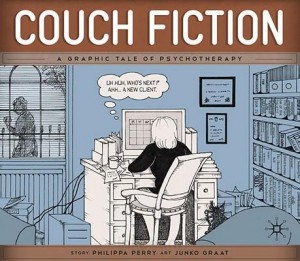Breaking Up
ScienceDaily: Anguish of romantic rejection may be linked to stimulation of areas of brain related to motivation, reward and addiction.
The study…helps to explain “why feelings and behaviors related to romantic rejection are difficult to control” and why extreme behaviors associated with romantic rejection such as stalking, homicide, suicide, and clinical depression occur in cultures all over the world, the researchers wrote.
Brush Right!
Not therapy: 10 Toothbrushing Mistakes (WebMD). But I just had a cavity filled.
Toothbrushing Mistake No. 1: Not Using the Right Toothbrush
Consider the size of your mouth when picking a toothbrush, says Richard H. Price, DMD, the consumer advisor for the American Dental Association. “If you are straining to open wide enough to let the brush in, the brush is probably too big,” he says…
Nine more where that come from.
The Net Remembers
NYT Magazine piece about the the trouble with erasing past mistakes online: The Web Means the End of Forgetting.
75 percent of U.S. recruiters and human-resource professionals report that their companies require them to do online research about candidates, and many use a range of sites when scrutinizing applicants — including search engines, social-networking sites, photo- and video-sharing sites, personal Web sites and blogs, Twitter and online-gaming sites. Seventy percent of U.S. recruiters report that they have rejected candidates because of information found online, like photos and discussion-board conversations and membership in controversial groups.
Music Mind
PsychCentral relays a study about the Long-term Benefits from Musical Training.
New research may help parents when they write the monthly check for music lessons…The research strongly suggests that the neural connections made during musical training also prime the brain for other aspects of human communication.
Positive Psychology TED
From TED2004–an oldie–Positive Psychology founder, Martin Seligman, talking his talk.
Meditation Brain
A study looks at the different brain waves associated with three different types of meditation.
Focused attention, characterized by beta/gamma activity, included meditations from Tibetan Buddhist (loving kindness and compassion), Buddhist (Zen and Diamond Way), and Chinese (Qigong) traditions.
Open monitoring, characterized by theta activity, included meditations from Buddhist (Mindfulness, and ZaZen), Chinese (Qigong), and Vedic (Sahaja Yoga) traditions.
Automatic self-transcending, characterized by alpha1 activity, included meditations from Vedic (Transcendental Meditation) and Chinese (Qigong) traditions.
Relationship Stress and Health
A study to put no one at ease: Relationship Insecurity Ups Health Risk.
Anxious attachment was positively associated with a wider range of health conditions, including some defined primarily by pain and several involving the cardiovascular system (e.g., stroke, heart attack or high blood pressure).
Consumer Psych
A trio of consumer psychology posts at PsychCentral:
In-store displays: How do consumers perceive pricing?
A study of house prices: Do the benefits of disclosure outweigh the risks?
What Happens in Therapy?

What happens in therapy? Good question. Couch Fiction, a book-length comic by British psychotherapist, Philippa Perry, offers some answers.
Based on a case study of Pat (our sandal-wearing, cat-loving psychotherapist) and her new client, James (an ambitious barrister with a potentially harmful habit he can’t stop), this graphic novel follows the anxieties, frustrations, mind-wanderings and break-throughs of each, through a year of therapy sessions together.
On the page: What he says, what she says…what he’s thinking, what she’s thinking. At page bottom, explanations about the theory behind various therapeutic interventions, missteps made, etc.
See a (very positive) review here…and an author interview here.
(Also at WTCI)
The Blue and the Gray
ScienceDaily: Why does everything look gray when you feel blue?
Regardless of culture, language, era, or individual artist, the arts consistently depict depression using darkness. Scientific findings now lend empirical support to this representation of depression that everything looks gray when you feel blue.